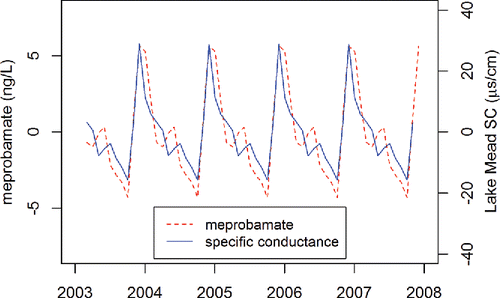Figures & data
Figure 1. Study location. Left panel: Southern Nevada and surrounding states; thick lines are state borders and thin lines are the Colorado River and tributaries of Lake Mead. Box indicates area shown in right panel. Right panel: Boulder Basin, the downstream portion of Lake Mead, which receives water from the upstream portion of Lake Mead and the Colorado River though the region marked “Colorado River inflow.” The river channel is on the east side of Boulder Basin. Las Vegas Wash enters Boulder Basin from the west. The intakes that supply water to Southern Nevada are located on the west side of Boulder Basin at the “Intake” site.

Figure 2. Observations of meprobamate (upper panel) and sulfamethoxazole (lower panel) concentrations measured in untreated water sampled from the drinking water intake in Lake Mead. Data from Benotti et al. (Citation2010).

Figure 3. Observations of Lake Mead elevation (upper panel), calculated Lake Mead volumes (middle panel), and observations of specific conductance (SC) at the Lake Mead drinking water intake (lower panel).
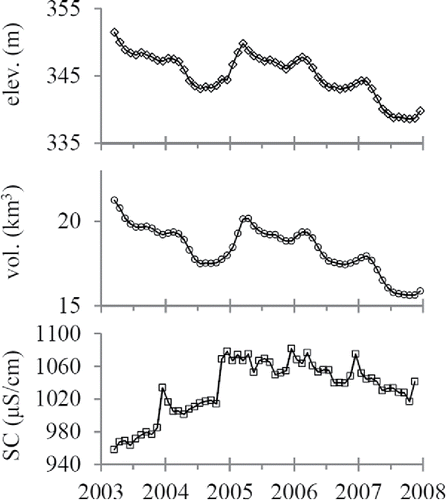
Figure 4. Meprobamate concentrations measured in Lake Mead by Benotti et al. (Citation2010). The missing values in January 2006, February 2006, and January 2007 correspond to breaks in the black line.
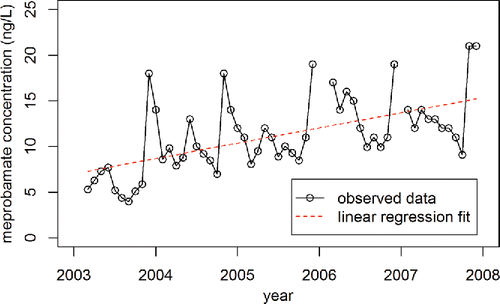


Figure 5. Observed data from Benotti et al. (Citation2010) and local regression fit, which used a span of 0.08 and a degree of 2.
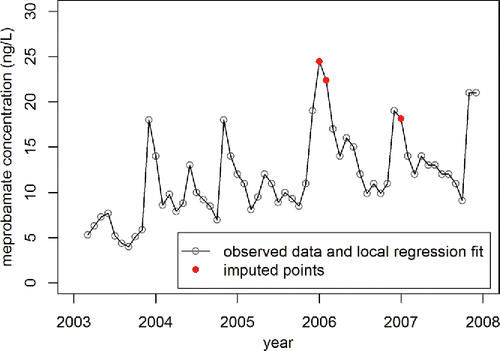
Figure 6. Observed data from Benotti et al. (Citation2010) and local regression fit, which used a span of 0.2 and a degree of 1.
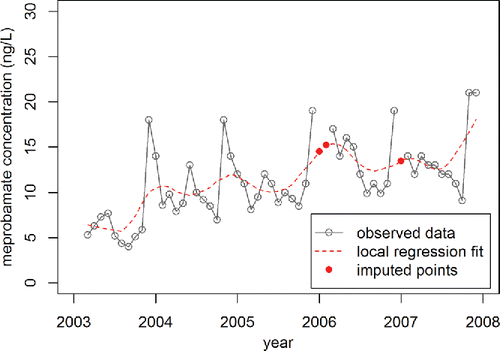

Figure 7. Four-panel decomposition plot of chemical time series data. Top panel: Observed data with interpolated points replacing missing values. Second panel: Seasonal component. Third panel: Long-term trend component. Bottom panel: Remainder. Units of vertical axes are ng/L, and gray bars indicate relative scale between the panels.
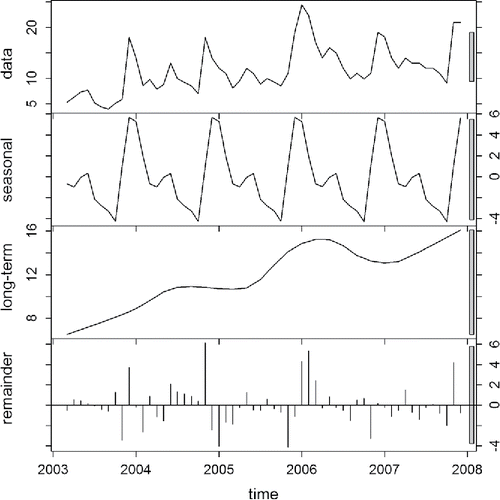
Figure 8. Comparison of meprobamate concentration and volume of Lake Mead. Left: Overlay plot of long-term trend components of time series decompositions. Right: Plot of long-term trend of chemicals versus volume of Lake Mead.
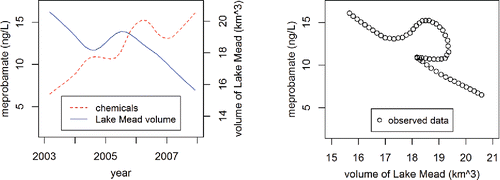


Table 1. Cross-correlation analysis of seasonal component of chemical time series lagged against seasonal component of Lake Mead volume time series.
Figure 10. Seasonal components of chemical time series and specific conductance measured at the location of water sampling at the bottom of Lake Mead.
